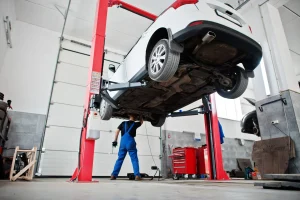Do you find yourself at the mercy of expensive mechanic bills every time your car needs a quick fix? You’re not alone. With soaring maintenance costs and a growing interest in sustainability, many drivers and car enthusiasts are turning to DIY car repairs. Not only is it more affordable, but it also empowers you with the knowledge to handle minor issues on your own—saving time and reducing stress.
Whether you’re commuting to work, taking a weekend road trip, or simply want to reduce your environmental impact, learning basic car repair is a skill every driver can benefit from. The best part? Getting started is easier than you might think. All you need is the right set of tools, some safety precautions, and a bit of guidance.
This beginner’s guide will walk you through the tools you need, how to use them, and where to find high-quality equipment so you can start your DIY car repair journey with confidence.
Essential Tools for DIY Car Repairs
Before you roll up your sleeves, it’s essential to equip yourself with the right tools. These are the must-have items every beginner should have in their garage or toolkit:
1. Wrenches and Socket Set
No car repair toolkit is complete without a quality set of wrenches and sockets. Wrenches are essential for tasks like loosening nuts and bolts, while socket sets make it easier to work in tight spaces.
- Common Use: Changing oil, tightening or loosening bolts on the engine or frame.
- Pro Tip: Invest in a ratchet wrench with multiple socket sizes for versatility.
2. Jack and Stands
Working underneath your car requires proper support, and that’s where a reliable jack and jack stands come in. Don’t rely solely on the car’s emergency kit—those are meant for quick, roadside fixes.
- Common Use: Replacing tires, inspecting the undercarriage, or working on the exhaust system.
- Pro Tip: Always pair your hydraulic jack with jack stands to ensure stability and safety.
3. Screwdriver Set
From unscrewing panels to accessing electronic components, a durable screwdriver set is a must.
- Common Use: Removing interior trim, fixing dashboard panels, or even addressing electrical issues.
- Pro Tip: Look for magnetic-tipped screwdrivers to hold tiny screws securely.
4. Multimeter
A multimeter is indispensable when diagnosing electrical problems. It measures voltage, current, and resistance, helping you identify inefficiencies or faults in your car’s electrical system.
- Common Use: Testing your car battery, examining alternator output, or checking circuit continuity.
- Pro Tip: Opt for a digital multimeter for more accuracy.
5. Torque Wrench
Some car components require exact torque when being tightened (e.g., wheel lug nuts). A torque wrench ensures you don’t under-tighten or over-tighten connections.
- Common Use: Securing wheels, spark plugs, or suspension components.
- Pro Tip: Stick to a wrench with calibrated torque settings to avoid guesswork.
6. Pliers and Cutters
For gripping, bending, or cutting wires and other materials, a set of high-quality pliers will always come in handy. Needle-nose pliers are especially useful for reaching confined spaces.
Adding these tools to your arsenal will give you a solid foundation for tackling a variety of basic repairs.
Safety First: Tips for Working on Your Car
Working on your car is rewarding, but safety should always come first. Here are some crucial tips to follow every time you’re tinkering under the hood (or anywhere else):
- Wear Protective Gear: Always wear gloves and safety goggles to protect against sharp components, chemical spills, or debris.
- Work on a Flat Surface: Ensure your car is parked on level ground with the parking brake engaged to reduce the risk of slipping.
- Use Tools Correctly: Read instruction manuals before using tools, especially for equipment like jacks and torque wrenches.
- Keep a Fire Extinguisher Nearby: When working with electrical components or fuel systems, it’s better to be safe than sorry.
- Stay Alert: Avoid working on your vehicle when you’re tired or distracted as this increases the likelihood of accidents.
By safeguarding yourself and your workspace, you can focus on the task at hand with peace of mind.
How to Use the Tools: A Step-by-Step Guide
Feeling overwhelmed by all these tools? Don’t worry—we’re breaking down how to use them for some common car repair tasks:
Changing a Tire
- Secure your car with wheel wedges and engage the parking brake.
- Use a lug wrench to loosen your tire bolts (don’t remove them yet).
- Lift the car using a hydraulic jack and stabilize it with jack stands.
- Remove the lug nuts, swap out the flat tire, and tighten the new one lightly.
- Lower the car and use a torque wrench to secure the lug nuts to specification.
Replacing Brake Pads
- Safely jack up the car and remove the wheel.
- Use a socket wrench to loosen the brake caliper bolts.
- Slide out old brake pads and insert the new ones.
- Secure everything back in place using your tools.
Learning these simple maintenance tasks can save you hundreds (or even thousands) of dollars over time.
Where to Buy Quality Tools
Now that you know what tools to get and how to use them, where can you find affordable, high-quality options?
Trusted Retailers
- Home Depot & Lowe’s offer a variety of durable tools ideal for DIY beginners.
- Harbor Freight Tools is great for budget-friendly options without sacrificing quality.
- Amazon allows you to compare ratings and reviews for finding the best deals easily.
Buying Tips
- Look for tools with lifetime warranties, offering added assurance in case of defects.
- Avoid counterfeit brands by buying directly from trusted retailers.
- Compare prices during sales events or seasonal promotions for maximum value.
Empower Yourself with DIY Car Repairs
By learning the basics of car repair and arming yourself with the right tools, you’re not just saving money—you’re taking control of your vehicle, your time, and your carbon footprint. Whether you’re tackling a sudden flat tire or upgrading your brakes, the confidence you gain will be priceless.
Remember, the first step is always the hardest. Start small, follow the safety procedures we outlined, and before you know it, you’ll have DIY mechanics bragging rights!
If you’ve already tried some repairs, we’d love to hear your experiences. Leave a comment below sharing your favorite tool or repair trick—your story might inspire someone else to get started!


